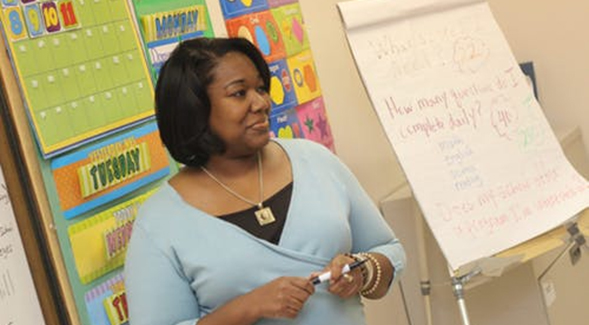New Program Accelerates Path to a Teaching Credential
Addressing a critical teacher shortage, a new CSU program could trim a full year off the traditional timetable for entering the profession.

Students at San Diego State University will soon be able to earn a bachelor’s degree and teacher’s credential simultaneously in as little as four years thanks to three new integrated curricula approved by the California State University in June.
Approved for fall 2020, the B.A. in Liberal Studies with a multiple subjects teaching credential will qualify graduates to immediately teach kindergarten through sixth grade statewide. At the same time, integrated programs in mathematics and chemistry will qualify graduates to teach those subjects in California middle and high schools.
“With these integrated pathways, we'll be able to put effective teachers in the classroom faster,” said Virginia Loh-Hagan, director of the Liberal Studies program in the College of Education. “Our alumni will be able to start their professional careers as soon as they graduate, and they can get a head start on making a difference in their communities.”
Integrated Teacher Education Programs (ITEP) were developed as a result of statewide initiatives to address California’s teacher shortage. One study estimates the state will require an additional 100,000 teachers over the next decade. Four additional ITEP programs are in the approval process as SDSU works to meet this significant need.
“We’re thrilled that these three integrated credential programs are moving forward — it’s a great milestone but this is only the beginning,” said Y. Barry Chung, dean of the College of Education. “Our state needs qualified teachers in all areas to keep up with public need, and the College of Education and our partners across campus are finalizing several additional programs for early childhood, middle school, high school, special education and bilingual education.”
More intensive
This accelerated pathway benefits SDSU students by allowing them to enter the teaching profession without paying for a fifth year of tuition. The new integrated programs require 130-135 units taken over four years, as opposed to the traditional 120-unit bachelor’s degree followed by a 40-45-unit post baccalaureate teacher credential program.
The traditional model will remain in place at SDSU, but prospective teachers will have the option to choose the ITEP pathway after completion of their first 60 units.
“It has the same rigor in terms of content knowledge, but you are exposed to the field of education much sooner,” said Rafaela Santa Cruz, director of the SDSU Math Science Teacher Initiative, who developed the mathematics and chemistry ITEP pathways along with Lisa Lamb, Qualcomm Endowed Professor of Mathematics Education, and faculty in the College of Sciences.
“Students will have more experience with schools and students so when they finish, they'll really know that they want to teach,” said Santa Cruz.
In the final two years of the new program, students will balance 18-21 units per semester while completing the 600 hours of fieldwork required by the California Commission on Teacher Credentialing. To create a supportive environment, integrated programs will operate on the cohort model, where students from each pathway take classes together.
“We know their schedules are going to be challenging.” said Loh-Hagan. “It will change the way we do business. We're going to have to offer more classes in the evening and just be more flexible and creative in how we accommodate students. We want them to be successful."
While the integrated program will officially be available to students starting in fall 2020, liberal studies majors and mathematics and chemistry teaching majors who started as of fall 2018 will be eligible as long as they have completed the necessary coursework.
Additionally, students transferring to SDSU from community colleges will be able to complete the integrated program in just two years provided they have the proper prerequisites.
“We’ve had tremendous collaboration with our partners in the community colleges,” Santa Cruz said. “I think everybody sees this as a win-win for the students.”



